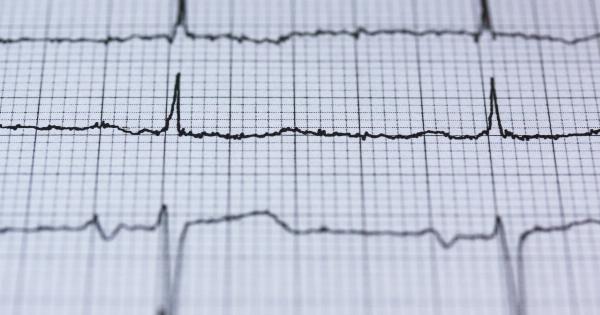The 7th Hellenic Cardiology Society Conference is an annual event that brings together leading experts in the field of cardiology to share the latest advancements and research in the diagnosis, treatment, and management of cardiac conditions.
This year, the conference will focus on invasive tactics for optimal cardiac health, highlighting the importance of intervention and invasive procedures in improving patient outcomes.
The Significance of Invasive Tactics
Invasive tactics play a crucial role in the field of cardiology, as they allow doctors to directly assess and treat various cardiac conditions.
These tactics involve the insertion of specialized instruments or devices into the body, allowing for accurate diagnosis, monitoring, and treatment. Invasive procedures can range from minimally invasive catheter-based interventions to complex open-heart surgeries.
Advancements in Invasive Techniques
Over the years, there have been significant advancements in invasive techniques, revolutionizing the field of cardiology. These advancements have led to improved patient outcomes, reduced hospital stays, and increased survival rates.
Some of the notable advancements include:.
1. Percutaneous Coronary Intervention (PCI)
PCI, also known as angioplasty, is a minimally invasive procedure used to open blocked or narrowed coronary arteries. During PCI, a thin tube called a catheter is threaded through a blood vessel to the affected artery.
A small balloon at the end of the catheter is inflated, widening the artery and restoring blood flow.
2. Transcatheter Aortic Valve Replacement (TAVR)
TAVR is a minimally invasive procedure used to replace the aortic valve in patients with severe aortic stenosis. Instead of a traditional open-heart surgery, a catheter is used to deliver a new valve to the site of the diseased valve.
This procedure offers a less invasive option for high-risk patients who may not be suitable candidates for traditional surgery.
3. Electrophysiology Studies and Ablation
Electrophysiology studies and ablation are invasive procedures used to diagnose and treat abnormal heart rhythms, known as arrhythmias.
During an electrophysiology study, small catheters are inserted into the heart to map the electrical pathways and identify the source of the arrhythmia. Ablation involves delivering energy (such as heat or cold) to destroy the abnormal tissue causing the arrhythmia.
4. Coronary Artery Bypass Grafting (CABG)
CABG is a surgical procedure used to bypass blocked or narrowed coronary arteries. During the procedure, a healthy blood vessel from another part of the body is grafted onto the affected artery, creating a new pathway for blood flow.
This surgery is typically recommended for patients with severe coronary artery disease who are not suitable candidates for angioplasty or stenting.
5. Transcatheter Mitral Valve Repair (TMVR)
TMVR is a minimally invasive procedure used to repair the mitral valve in patients with mitral regurgitation. Instead of a traditional open-heart surgery, a catheter is used to deliver specialized devices to the site of the leaky valve.
These devices help restore proper valve function and improve overall cardiac health.
Importance of Conference Talks and Workshops
The Hellenic Cardiology Society Conference provides a platform for experts to share their knowledge and experience in using invasive tactics for optimal cardiac health.
The conference includes a series of talks, presentations, and workshops covering various aspects of invasive procedures. Attendees can learn about new techniques, best practices, and the latest research in the field of interventional cardiology.
The Benefits of Invasive Tactics for Patients
Invasive tactics offer several benefits for patients with cardiac conditions. These benefits include:.
1. Improved Diagnosis
By directly accessing the heart and its vessels, invasive procedures provide detailed information about the extent and severity of cardiac diseases. This accurate diagnosis helps doctors develop personalized treatment plans for each patient.
2. Precise Treatment
Invasive tactics allow doctors to precisely target and treat specific areas of concern within the heart. This targeted approach minimizes damage to healthy tissue and improves the effectiveness of interventions.
3. Faster Recovery
Minimally invasive procedures typically result in faster recovery times compared to traditional open-heart surgeries.
Patients may experience less pain, reduced scarring, and shorter hospital stays, enabling them to resume their normal activities sooner.
4. Increased Long-Term Survival
The advancements in invasive tactics have significantly improved long-term survival rates for patients with cardiac conditions. These procedures address the root causes of the disease, allowing patients to live longer and healthier lives.
The Future of Invasive Cardiology
The future of invasive cardiology holds exciting possibilities. Ongoing research and technological advancements continue to refine existing procedures and develop innovative techniques.
These advancements aim to further improve patient outcomes, enhance treatment options, and minimize invasiveness.
Conclusion
The 7th Hellenic Cardiology Society Conference will be a valuable event for medical professionals, researchers, and industry experts interested in invasive tactics for optimal cardiac health.
By sharing knowledge, experiences, and advancements in the field, the conference will contribute to further improving patient outcomes and advancing the practice of interventional cardiology.






























